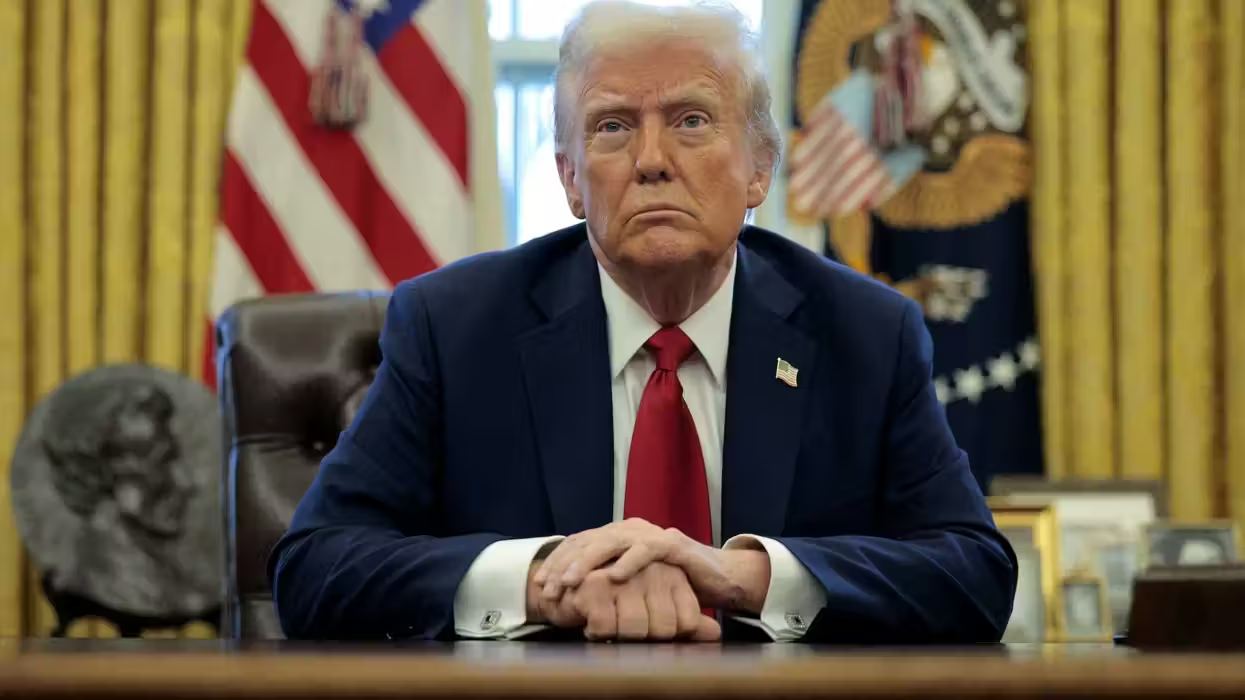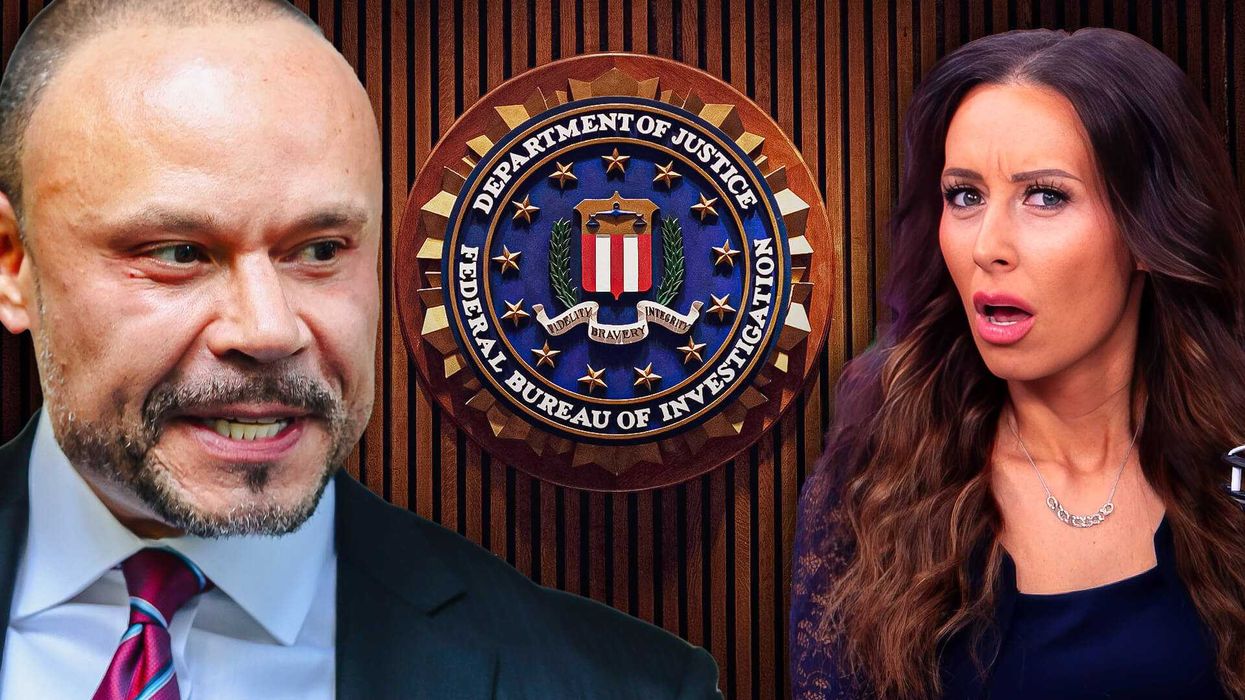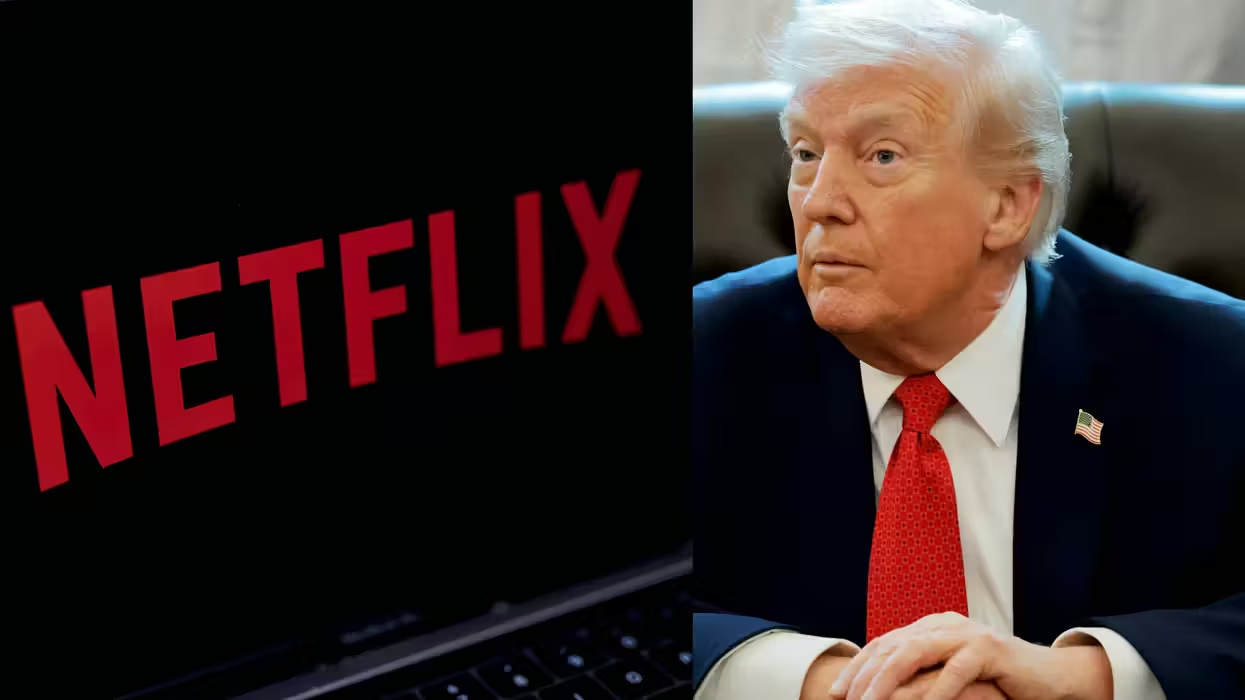
© 2025 Blaze Media LLC. All rights reserved.
Eye on the ‘Fiscal Cliff’ Part II: Four Ways the Cliff Will Affect Gov't
December 11, 2012
While a great deal of attention has been given to the tax increases included in the impending “fiscal cliff,” very little has been given to the across-the-board spending cuts.
Considering the fact that the “cliff” includes a 8.2 percent budget cut to all federal discretionary spending programs -- and the fact that almost all federal government activities are funded through discretionary programs -- you’d think Washington lawmakers would be closer to having a budget deal, right?
Government Programs and Discretionary Spending:
 SOURCE: Data from the Congressional Budget Office, The Budget and Economic Outlook: Fiscal Years 2012 to 2022, January 2012. Courtesy PGPF.
SOURCE: Data from the Congressional Budget Office, The Budget and Economic Outlook: Fiscal Years 2012 to 2022, January 2012. Courtesy PGPF.
Unfortunately for the average American, Washington has been working at a snail’s pace to hammer out some sort of budget compromise. But let’s say the deadline comes and goes and we do go over the “fiscal cliff.”
What would that look like for government spending?
To give you a little perspective, here are four areas that would be affected by the spending cuts included in the “fiscal cliff”:
EDUCATION
 (Getty Images)
(Getty Images)
In the event Congress takes no action and the automatic the 8.2 percent budget cuts to all federal discretionary spending programs kick in, the following education programs would take a hit [via the Washington Post]:
Title I (which targets money to low-income students), IDEA (the Individuals with Disabilities Education Act, which sends money to special education students), Title II (which provides money to improve teacher quality) and the Rural Education Achievement Program (which helps small, rural school districts).
DEFENSE
 (Getty Images)
(Getty Images)
This one is obvious. When the cuts kick in, the defense part of the U.S. government will get a real kick in the head.
“Over the next decade, the $500 billion cuts to defense spending will be phased in, with a whopping $55 billion to take effect next year alone,” writes Diane Alter for Money Morning.
Unsurprisingly, many feel that drastic cuts to defense might endanger national security. Also, analysts believe that major cuts to defense will be felt well beyond 2013.
"With the U.S. fiscal deficit still an unsolved problem, we remain resolute in our belief that the big cuts in defense budgets have yet to be seen, and may start to show up in the 2014-2015 timeframe after a more turbulent than normal political environment in 2013. We do not expect a major impact from cuts in the defense industry until late in our 12- to 18-month outlook period," Moody's ratings agency noted.
ENERGY
 (Getty Images)
(Getty Images)
Many tax credits and government-backed subsidies associated with renewable energy and fossil-fuels are scheduled to expire at the end of the year unless Congress votes to extend them.
“The production tax credit for wind energy is set to expire at year's end unless Congress votes to extend it. The mandatory, across-the-board sequestration cuts set to go into effect on Jan. 2 would affect … the Environmental Protection Agency and the Energy and Interior departments. It's unclear exactly which projects would face the chopping block,” writes Amy Harder for National Journal.
“Congressional Democrats are pushing to eliminate oil and gas subsides as part of any compromise. Meanwhile, some fossil-fuel industry and business groups are making the case that increased oil and natural-gas drilling can help solve the country's fiscal crisis, too,” she adds.
As of this writing, however, neither Republicans nor Democrats have addressed how mandatory spending cuts will affect environmental and energy issues.
Everyone is focused on tax cuts.
HEALTHCARE
 (Getty Images)
(Getty Images)
Here’s another area where very little attention has been paid. According to a few analysts, the proposed cuts would be felt all throughout the healthcare industry.
“The proposed 2% budget cut in health care is going to primarily affect health care providers, such as hospitals, nursing homes, and long-term care facilities. The government is a big payer to these providers, and a 2% cut will result in a price reduction to their reimbursement levels, which tends to fall directly to a company’s bottom line [operating profit] because these are very high fixed-cost businesses,” said Fidelity portfolio manager, health care, Eddie Yoon.
“In addition, there will be an 8% across-the-board budget cut to the National Institutes of Health (NIH), which impacts basic research funding that’s spent by academic labs and research institutions around our country,” he added.
Click here for Part I of our “Eye on the Fiscal Cliff” series
Follow Becket Adams (@BecketAdams) on Twitter
All photos courtesy Getty Images.
Want to leave a tip?
We answer to you. Help keep our content free of advertisers and big tech censorship by leaving a tip today.
Want to join the conversation?
Already a subscriber?
more stories
Sign up for the Blaze newsletter
By signing up, you agree to our Privacy Policy and Terms of Use, and agree to receive content that may sometimes include advertisements. You may opt out at any time.
Related Content
© 2025 Blaze Media LLC. All rights reserved.
Get the stories that matter most delivered directly to your inbox.
By signing up, you agree to our Privacy Policy and Terms of Use, and agree to receive content that may sometimes include advertisements. You may opt out at any time.






